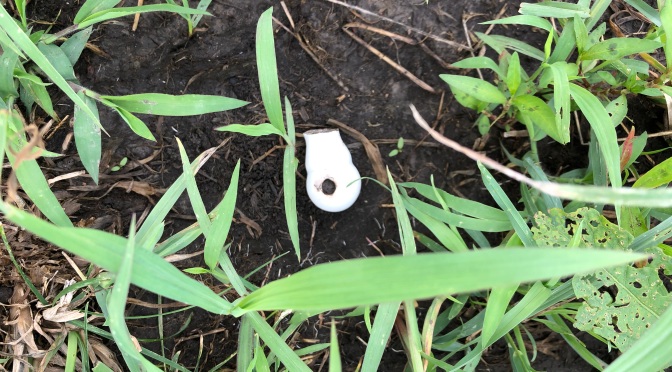Starting with point #7 from last week‘s entry of setting oneself up for financially healthy ranching or business.
Reduce overheads! Stan Parsons said you only need a hammer and a wheelbarrow to be a financially successful rancher, and the wheelbarrow was questionable. Now, i might be paraphrasing, but his point is clear; that which rusts, rots, and depreciates is not an asset and likely adds labor and other unnecessary costs. Machinery, buildings, vehicles, even a stack of hay!
Nearly every ranch or farm has a massive amount of iron and steel piled around the farm or taking up space in a barn or shed of questionable value. Both the barn and the machinery must be pulled under scrutiny. Some farms may even have extra homes, though often the old homes and ancient barns may not even be worth tearing down, but the satisfaction of cleaning up a place may provide the incentive. However, there is also the issue of liability and, even the threat to health of livestock to leave such structures in place. Livestock has no need of buildings or machinery.
Approach each piece of machinery, barn, shed, house, corral, etc with a very critical eye. Be careful you aren’t fixing machinery and buildings you don’t even need! Additionally, consider whether or not you are making an overhead expense as a monument to tax evasion. If you purchase fence supplies, fuel, machinery, etc to offset income every year, what advantage is there except needing more room for storage and increasing chances of obsolescence and decay. Is it important to hoard fence supplies when you really don’t need to build fence? Even in our remote area with few people to do work, we can hire a fencing crew.
- When was the last time i used this machine and why did i use it?
- Do i have time to run this machine?
- Does it have a purpose right now, this very moment in time which will add harmony to my life?
- Does it have more value to someone else – in other words – before it is obsolete, would the kinder thing be to sell it to a younger person to give him an opportunity to purchase a needed piece at a discounted (used) price?
- A shed or building may have value to someone else – either as selling it and moving it off your property (ideal) or if it’s in good condition and easily accessible maybe repurposed from storing your machinery you don’t need to leasing out the space. Remember though that maintenance expenses, depreciation, damage will still fall on you.
- If a building is needed for necessities, be sure to update it so that it is easily used by all who need to. Consider overhead doors or smaller ‘people’ doors. Eliminating heavy sliding doors will save on health issues.
- Corrals – good ones are a necessity on any ranch. There may be too many expensive systems scattered at various small parcels – Why? If the money has already been spent it becomes more difficult to decide the path forward. Should more money be spent to tear it out and sell the parts? or just leave it and use it once a year?
In some cases, the time to make the decision whether or not to spend wads of cash comes BEFORE the money is blown. This is most assuredly the case with more permanent type structures such as corrals and buildings.
I’m going to go so far as to say, the many farms, ranches, and businesses, could have ‘estate’ sales to generate 100s of thousands of dollars to reinvest and actually free up valuable time and be more profitable. In fact, you may have other valuable assets which need selling before they become liabilities or worthless. Harvesting mature trees comes to mind. Take inventory of your farm, ranch, and business. Decide what is not needed to keep it moving forward so it’s more rewarding – perhaps the next generation will be more interested in continuing the legacy you built with literal blood, sweat, and tears.
All the points i will be covering are so intertwined, it’s difficult to pull out each one as a standalone. Case in point is the example of excess corrals. Before spending 10s of thousands of dollars on multiple corrals, the better direction is likely to combine herds and build one good corral. If a small catch area is needed at another location, perhaps a mobile unit would be helpful. But better yet, the satellite location can likely be leased out or sold off.
The bottom line:
Sell off all unused machinery, buildings, vehicles, tools, etc All these are liabilities and cause a lot of wasted time and expense in maintenance (labor and supplies), insurance, and depreciation. Hoarding is not a good trait – help someone get started by selling off unused assets before they are obsolete.
Shabbat Shalom!
Create Something Beautiful Everyday!



Piles of materials taking up valuable space and rusting down this past year. I’ve even toured farms and came upon a huge pile of brand new steel posts and multiple rolls of barbed wire completely engulfed by years of mature grasses and tree sprouts in the middle of the pasture! Not in good shape after 30 years or more. Count the cost BEFORE buying stuff to put into storage. The cost should include whether or not you have time or any help to get the job done. FIRST – do i really need this?









